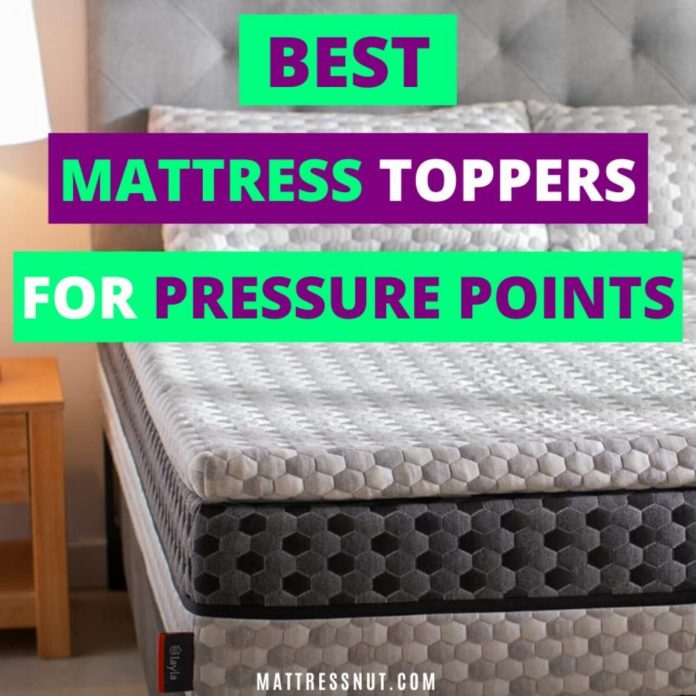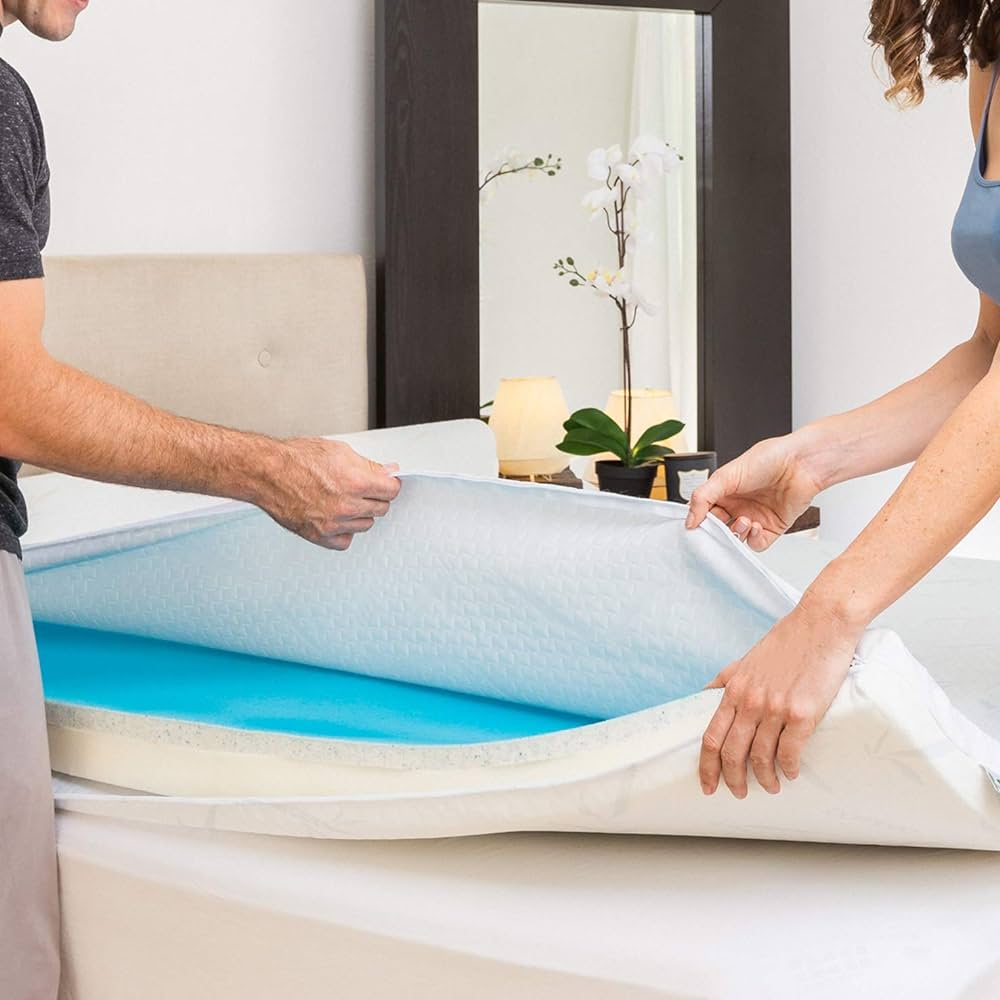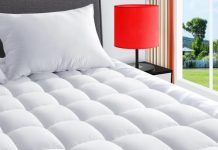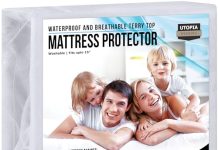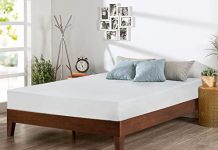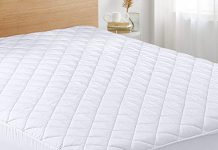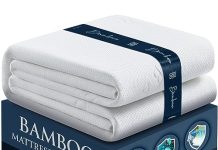We’ve all experienced those restless nights where we toss and turn, desperately trying to find a comfortable position that eases the pressure on our achy joints and sore muscles. But what if there was a solution to this common problem? Could mattress pads be the key to alleviating those troublesome pressure points? In this article, we’ll explore the potential benefits of mattress pads in providing the comfort and support needed for a restful night’s sleep.
This image is property of www.mattressnut.com.
Review contents
What are pressure points?
Definition of pressure points
Pressure points are specific areas on the body where physical force or pressure can cause discomfort, pain, or other sensations. These points are typically more sensitive or vulnerable due to factors such as nerves, muscles, and other tissues being closer to the surface. Applying pressure to these points can often result in a variety of effects, both positive and negative.
Common pressure points in the body
There are several commonly known pressure points in the body that can be targeted for various purposes. Some of the most well-known pressure points include:
- Temples: Located on the sides of the forehead, massaging the temples can help alleviate headaches and relieve tension.
- Neck and shoulders: Applying pressure to these areas can help reduce muscle stiffness, relieve pain, and promote relaxation.
- Upper back: Targeting the pressure points in the upper back can provide relief from muscle tension and knots.
- Hands and feet: These extremities contain numerous pressure points that are linked to different organs and systems in the body. Massaging these points can improve overall well-being and relaxation.
Causes of pressure points
Sleeping positions
One of the main causes of pressure points is the sleeping position. Certain sleep positions, such as sleeping on the stomach or on one side for an extended period, can put pressure on specific areas of the body. This sustained pressure can lead to discomfort and the development of pressure points.
Body weight and distribution
Body weight and distribution also play a significant role in the development of pressure points. Individuals who carry excess weight may experience increased pressure on certain areas of the body, particularly in areas where bone and soft tissue meet. This increased pressure can lead to the formation of pressure points.
Mattress firmness and support
The type and firmness of the mattress can significantly impact the occurrence and severity of pressure points. A mattress that is too firm may not provide adequate cushioning, leading to increased pressure on certain areas of the body. On the other hand, a mattress that is too soft may lack proper support, causing the body to sink and creating pressure points.
Understanding mattress pads
Definition of mattress pads
Mattress pads, also known as mattress toppers, are removable layers of cushioning materials designed to be placed on top of a mattress. These pads provide an added layer of comfort and protection, enhancing the overall sleeping experience.
Types of mattress pads
There are various types of mattress pads available on the market, each offering different benefits and features. Some common types include:
- Memory foam mattress pads: These pads are made from viscoelastic foam that conforms to the body’s shape, providing pressure relief and personalized support.
- Gel-infused mattress pads: These pads incorporate gel beads or gel-infused foam to regulate temperature and provide additional comfort.
- Latex mattress pads: Made from natural or synthetic latex, these pads offer a combination of support, comfort, and durability.
- Egg crate mattress pads: Featuring a convoluted or egg crate-like surface, these pads provide cushioning and promote air circulation.
Functionality of mattress pads
Mattress pads serve multiple purposes. They can help protect the mattress from stains, spills, and wear, prolonging its lifespan. Additionally, mattress pads can enhance comfort by providing additional cushioning and support. They can also help regulate temperature and minimize motion transfer, ensuring a more restful sleep.
Benefits of using mattress pads
Pressure relief
One of the key benefits of using mattress pads is their ability to alleviate pressure points. The added cushioning and support provided by mattress pads help distribute body weight more evenly, reducing the concentration of pressure on specific areas. This can help alleviate discomfort and pain associated with pressure points.
Enhanced comfort
Mattress pads can significantly enhance the overall comfort of a mattress. They can soften a mattress that is too firm, providing a more plush and luxurious sleeping surface. Conversely, they can add extra support to a mattress that is too soft, improving spinal alignment and reducing the risk of pressure points.
Improvement in sleep quality
By reducing pressure points and enhancing comfort, mattress pads can contribute to an overall improvement in sleep quality. With less discomfort and better support, individuals are more likely to experience uninterrupted sleep and wake up feeling refreshed and energized.
This image is property of cdn.shoplightspeed.com.
Types of mattress pads to alleviate pressure points
Memory foam mattress pads
Memory foam mattress pads are particularly effective in alleviating pressure points. The unique properties of memory foam allow it to conform to the body’s shape, providing personalized support and relieving pressure on specific areas. The foam redistributes weight evenly, reducing the risk of developing pressure points.
Gel-infused mattress pads
Gel-infused mattress pads combine the benefits of gel technology with mattress padding. The gel beads or gel-infused foam help regulate body temperature by dissipating heat. By preventing excessive heat buildup, these pads can minimize discomfort and reduce the chances of developing pressure points.
Latex mattress pads
Latex mattress pads are known for their natural responsiveness and resilience. The latex material contours to the body, providing targeted support and alleviating pressure points. These pads are also highly durable and can retain their shape and properties over an extended period.
Egg crate mattress pads
Egg crate mattress pads feature a convoluted or egg crate-like surface. This unique design helps to distribute body weight evenly and promote air circulation, reducing the risk of pressure points. These pads are lightweight, affordable, and can be easily attached to the mattress for added comfort.
Factors to consider when choosing a mattress pad
Thickness and density
The thickness and density of the mattress pad are crucial factors to consider when selecting the right one for pressure point relief. Thicker and higher-density pads typically offer better cushioning and support, effectively reducing pressure points.
Material and breathability
The material of the mattress pad impacts its overall comfort and breathability. Breathable materials, such as cotton or bamboo, allow for better airflow and temperature regulation, enhancing sleep quality. It is essential to choose a material that is suitable for individual preferences and needs.
Hypoallergenic properties
For individuals with allergies or sensitivities, opting for a hypoallergenic mattress pad is essential. Hypoallergenic pads are made from materials that resist the growth of allergens, such as dust mites and mold. This can contribute to a healthier and more comfortable sleep environment.
Easy care and maintenance
Considering the ease of care and maintenance is essential when choosing a mattress pad. Look for pads that are machine washable and easy to clean. Additionally, choosing a durable material that can withstand regular use and maintain its properties over time is advisable.
This image is property of Amazon.com.
How mattress pads alleviate pressure points
Even weight distribution
Mattress pads help alleviate pressure points by promoting even weight distribution. The additional layer of cushioning helps ensure that the body’s weight is spread more evenly across the surface, reducing the concentration of pressure on specific areas. This can help prevent the formation of pressure points and provide relief for existing ones.
Contouring to body shape
Certain types of mattress pads, such as memory foam and latex, are designed to contour to the body’s shape. They conform to the curves and contours, providing targeted support and relieving pressure on vulnerable areas. This contouring effect helps reduce the risk of pressure points and promotes better spinal alignment.
Reduced motion transfer
Another way in which mattress pads alleviate pressure points is by reducing motion transfer. Motion isolation properties of mattress pads minimize disturbances caused by movement, allowing for undisturbed sleep. This can prevent sudden shifts in body position, which can aggravate pressure points.
Related medical conditions and mattress pads
Arthritis and joint pain
Individuals suffering from arthritis or joint pain can benefit from using mattress pads. The added cushioning and support provided by these pads can help reduce pressure on the joints, provide pain relief, and improve overall comfort during sleep.
Fibromyalgia
Fibromyalgia is a condition characterized by widespread musculoskeletal pain. Proper support and pressure relief are essential in managing this condition. Mattress pads, particularly memory foam or latex pads, can help alleviate pressure points and provide much-needed comfort for individuals with fibromyalgia.
Lower back pain
Lower back pain is a prevalent condition that can be exacerbated by poor sleeping posture and pressure points. Mattress pads that provide adequate support and promote spinal alignment can help alleviate lower back pain by reducing pressure on the affected areas.
Hip and shoulder pain
Many individuals experience hip and shoulder pain due to pressure points caused by improper mattress support. Mattress pads with targeted cushioning and contouring abilities can relieve pressure on these areas, providing pain relief and enhanced comfort.
This image is property of media.sleepfoundation.org.
Additional measures to alleviate pressure points
Regular exercise and stretching
Engaging in regular exercise and stretching routines can help alleviate pressure points by promoting flexibility, strength, and blood circulation. Exercises targeting specific muscle groups, such as the neck, shoulders, and lower back, can help relieve tension and reduce the likelihood of developing pressure points.
Proper body alignment during sleep
Maintaining proper body alignment during sleep is crucial in preventing and alleviating pressure points. It is advisable to sleep on a mattress pad that provides support for the natural curvature of the spine and aligns the body in a neutral position.
Using pillows for support
Using pillows strategically can provide additional support and help alleviate pressure points. Placing pillows under the knees, between the legs, or under the neck can help maintain proper body alignment and reduce pressure on vulnerable areas.
Conclusion
In conclusion, mattress pads can be an effective solution for alleviating pressure points and improving sleep quality. By providing an additional layer of cushioning and support, mattress pads help distribute body weight evenly, contour to the body’s shape, and reduce motion transfer. They offer various benefits, including pressure relief, enhanced comfort, and improved sleep quality. When choosing a mattress pad, factors such as thickness, material, hypoallergenic properties, and ease of care should be considered. Incorporating mattress pads, along with other measures such as regular exercise and maintaining proper body alignment, can contribute to a comfortable and restful sleep experience.
This image is property of Amazon.com.

